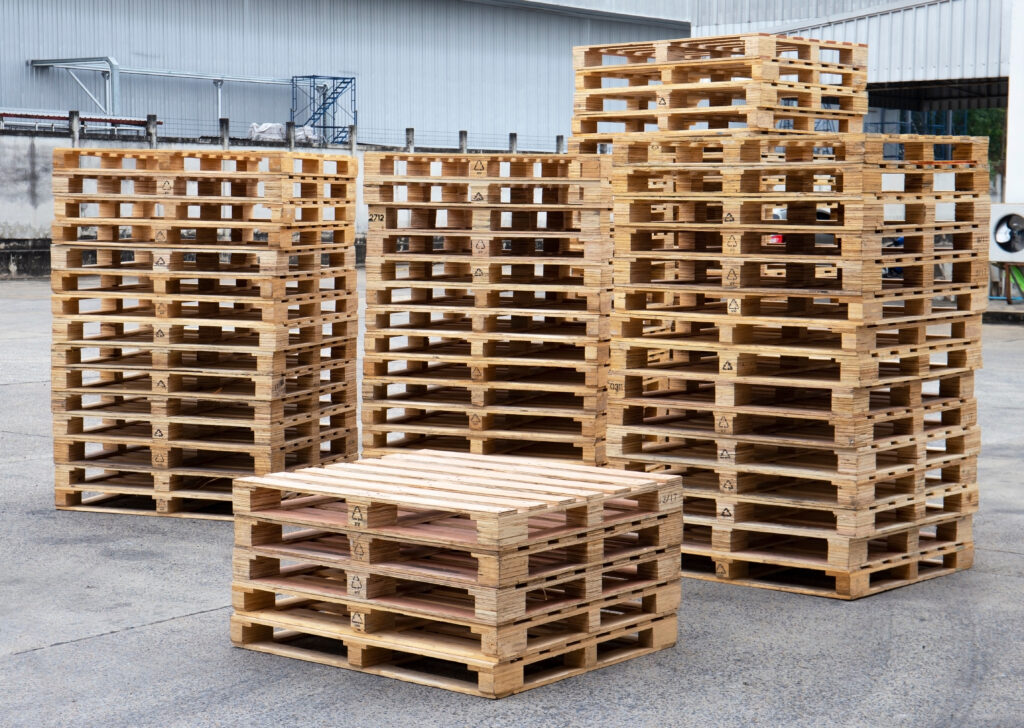
To run a warehouse effectively, you’ll need various storage and shelving equipment. These ensure proper storage within a warehouse and simplify the storage process, as having these helps you move things more conveniently in your storage facility—saving you time and the cost of hiring employees. One of the most commonly used storage and shelving equipment is pallets.
Pallets have multiple uses. You could use them to store, transport, pile up, or assemble products. There are various types of pallets, such as plastic and wood pallets. Of these two, wood pallets are at least 1tentimes more widely used compared to plastic pallets since they are less expensive and can hold more weight.

That said, you might be planning to use wood pallets for storage and shelving around your business. However, safety measures must be observed to ensure safety when using them. With that in mind, here are eight tips on using wood pallets for storage and shelving:
Contents
1. Inspect The Pallets For Defects
Start by ensuring that the wood pallet you’ll be using is safe and in good condition. Get rid of damaged, weak, and cracked pallets. Also, look for those with loose or protruding nails to prevent getting unnecessary cuts when handling them.
Your effort to follow all procedures of stacking and loading will be a waste if you’re using a broken or damaged pallet for your products. The pallets may break down and damage items or even knock you down. Therefore, ensure you have wood pallets in good condition, and if unsafe to use, invest in new ones.
Whether buying new wood pallets or recycling used ones, ascertain they’re safe before using them. To further ensure that you have high-quality wood pallets, purchase them from reputable suppliers. You can follow this link to find a reputable wood pallets supplier.
2. Wear Protective Gears
Storing, handling, and transporting various materials in storage facilities is risky as equipment breakdowns and incidents may happen at any It’s. It’s, therefore, crucial to wear the correct safety gear to avoid getting hurt when working. The following are some of the personal protective equipment (PPE) you and your workers must have when working in warehouses and other storage facilities:
- Safety boots
- Gloves
- Hard hats
- Face masks
- Safety glasses/goggles
- Earplugs
- Safety harness
Hands, head, and foot injuries may occur when using pallets for storage and shelving, but you can prevent them by wearing work gloves, hard hats, and safety boots. Ensure the risk management department looks into all essential PPE and that all employees have the necessary safety gear.
3. Stack And Load Pallets Properly
Follow the proper procedure when loading and stacking wood pallets to improve warehouse safety. Ensure even distribution of products on the pallet to maintain balance. If the distribution is imbalanced, goods may fall or shift, causing damage or hitting you on their way down.
Also, ensure to start with the most extensive pallet and stack pallets of the same shape and size. Here are more tips on stacking and loading pallets correctly:
- Avoid Pyramid Stacking: A pyramid isn’t the safest way to stack and load products on wood pallets. Doing so will cause the stack to be narrower and unstable with height. Cylindrical objects are also prone to rolling off the top, causing the entire stack to cDon’tse.
- Don’t Reuse Damaged Pallets: Damaged pallets are they’re, they’re likely to break down, resulting in more harm than good. You may temporarily repair ones with minor damages. For instance, you can use industrial super glue to fill in minimal gaps pallet’s pallet’s surface. However, for major ones, consider replacing them.
- Start with the Heaviest Pallet: When stacking wood pallets, put items with the most weight on the bottom of your pallet. Placing them on top will result in an unbalanced stack and a higher center of gravity.
- Consider Weight and Height Limitations: St stacked pallets’ maximum weight and height matter. Ensure you observe this for safety purposes.
4. Practice Good Housekeeping
Proper housekeeping procedures ensure correct handling, storage, and movement of items from the moment they enter the warehouse to the moment of exit. It also creates a clean, well-organized workplace, minimal handling, and an effective material flow strategy. For instance, if wood pallets break down and pieces are everywhere, clean them immediately. Also, ensure don’tallets don’t block critical areas, equipment, and entrances like fire extinguishers, fire alarms, emergency exits, and others.
5. Create Consistent Employee Training Programs
Accidents might occur due to poor handling of materials in the warehouse, carelessness, or lack of knowledge on using the warehousing tools appropriately. Start a training program to educate employees on proper material handling and pallet stacking procedures. This ensures that your employees follow standard guidelines and prioritize safety to maintain a safe working environment.
6. Keep The Wood Pallets Dry
One of the best things about woothey’rets is that they’re easy to maintain. To preserve your wooden pallets and keep them in good working condition, keep them in a dry place. Moisture and wetness damage wood and can cause it to deteriorate and rot. You can also varnish or paint the wooden shelves and storage compartments to preserve them.
When placing items on the shelves, dry them to avoid having water on your shelves. You can also consider integrating humidity control warehouse’s your warehouse’s HVAC system to ensure proper humidity and avoid damaging your products and wood pallets. Just remember to find a reputable and affordable HVAC contractor that allows dehumidifiers to be integrated into their HVAC units. Also, if you must clean wooden pallets, use a power washer and let them dry in the sun. Drying in the sun will protect it from molds, and the UV rays can act as treatment.
7. Practice Safe Manual Handling
You must be very careful when handling pallets don’tlly. Ensure you don’t step or stand on the wood pallet because your leg can get stuck if the deck breaks, shifts, there’s over because there’s no counterbalance. When manually lifting pallets, make sure you have a co-worker to help you and be careful because it’s easy to lose balance which may lead to injuries.
Conclusion
Warehousing can be dangerous to the safety and health of employees, especially when using pallets and forklifts to move products around. It could be because of poor stacking and loading, damaged pallets, or just ignoring the safety gear.
To prevent these from happening, create training programs for your employees to educate them on all safety procedures for using wood pallets. Also, ensure you secure quality wood pallets from reliable suppliers with a proven track record of manufacturing premium-quality pallets that can stand the test of time. Couple that with regular maintenance.






